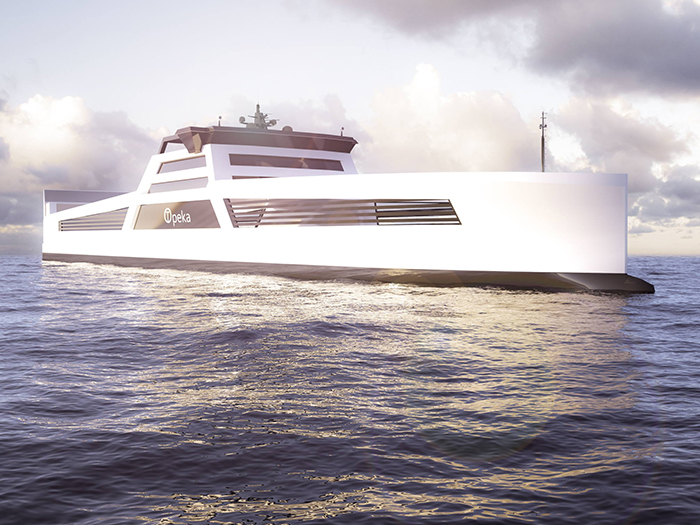
Project plans to put hydrogen-fueled RO/RO into operation by 2024
Written by Nick Blenkey
RO/RO will be built as a zero emission vessel, combining a 1,000 kWh battery capacity with a 3 MW PEM (proton exchange membrane) hydrogen fuel cell.
A project that aims to put a RO/RO operating on liquid green hydrogen (LH2) into operation by 2024 has been granted EUR 8 million (about $9.5 million) in EU funding.
Called the HySHIP project, it brings together 14 European partners to collaborate on the design and construction of the RO/RO demonstration vessel and on the establishment of a viable LH2 supply chain and bunkering platform.
The ship will be operated by Norwegian maritime industry group Wilhelmsen and will distribute LH2 to hydrogen hubs along the Norwegian coast. Given the concept name “Topeka,” the RO/RO will be built as a zero emission vessel, combining a 1,000 kWh battery capacity with a 3 MW PEM (proton exchange membrane) hydrogen fuel cell.
Hydrogen will be sourced from a new LH2 production plant planned at Mongstad outside Bergen by BKK, Equinor and Air Liquide.
HySHIP will also conduct three replicator studies, including a smaller, 1 MW tanker barge for use on inland waterways, a 3 MW fast ferry and a scaling-up study on a larger, 20 MW energy system for deepsea vessels using a capesize bulk carrier as the replicator.
The Topeka RO/RO will sail on a fixed schedule carrying both coastwise customer cargo and containerized LH2 to the bunkering hubs. Norway’s west coast is dotted with bases serving the offshore industries, with base-to-base transport representing a heavy-duty transport route eminently suited to LH2.
HySHIP will be a large-scale validation of both the ship, its innovative power system, and the distribution network. The bunkering hubs will in the future supply LH2-powered vessels including ferries and seagoing tonnage.
“Hydrogen as a fuel enables opportunities for low, or zero-emission shipping. Topeka will be our first step towards scalable LH2 fueled maritime operations,” says Per Brinchmann, says vice president of special projects at Wilhelmsen, which is coordinating the project. “We shall create a full LH2 infrastructure and commercial ecosystem, while at the same time removing yearly some 25,000 trucks from the roads.”
“A hydrogen driven coastal-liner that has a regular frequency is a very promising transportation alternative for Equinor’s bases on the west coast of Norway,” says Frida Eklöf Monstad, vice president logistics and emergency response at Equinor. “This zero-emission vessel service will also be a valuable demonstrator of the technology development supporting Equinor’s ambitions to move cargo from road to sea and to halve emissions from our maritime activities in Norway by 2030.”
“Maritime is a large contributor of global GHG emissions and thus a priority sector to decarbonize. Hydrogen and fuel cells have the potential to propel vessels in a zero-emission fashion and various ship types are starting to integrate them. HySHIP will be a worldwide forerunner innovation project due to its use of liquid hydrogen, the size of the fuel cell and the concept for the LH2 distribution” adds Bart Biebuyck, executive director at the European Commission’s Fuel Cells and Hydrogen Joint Undertaking (FCH JU).
The HySHIP consortium partners, alongside project leader Wilhelmsen, include Kongsberg Maritime (NO), LMG Marin (NO & FR), Equinor (NO), Norled (NO), PersEE (FR), Diana Shipping (GR), Stolt-Nielsen Inland Tanker Service BV (NL), Air Liquide (FR), NCE Maritime CleanTech (NO), DNV GL, ETH Zürich (CH), Strathclyde University (UK) and Demokritos (GR).




